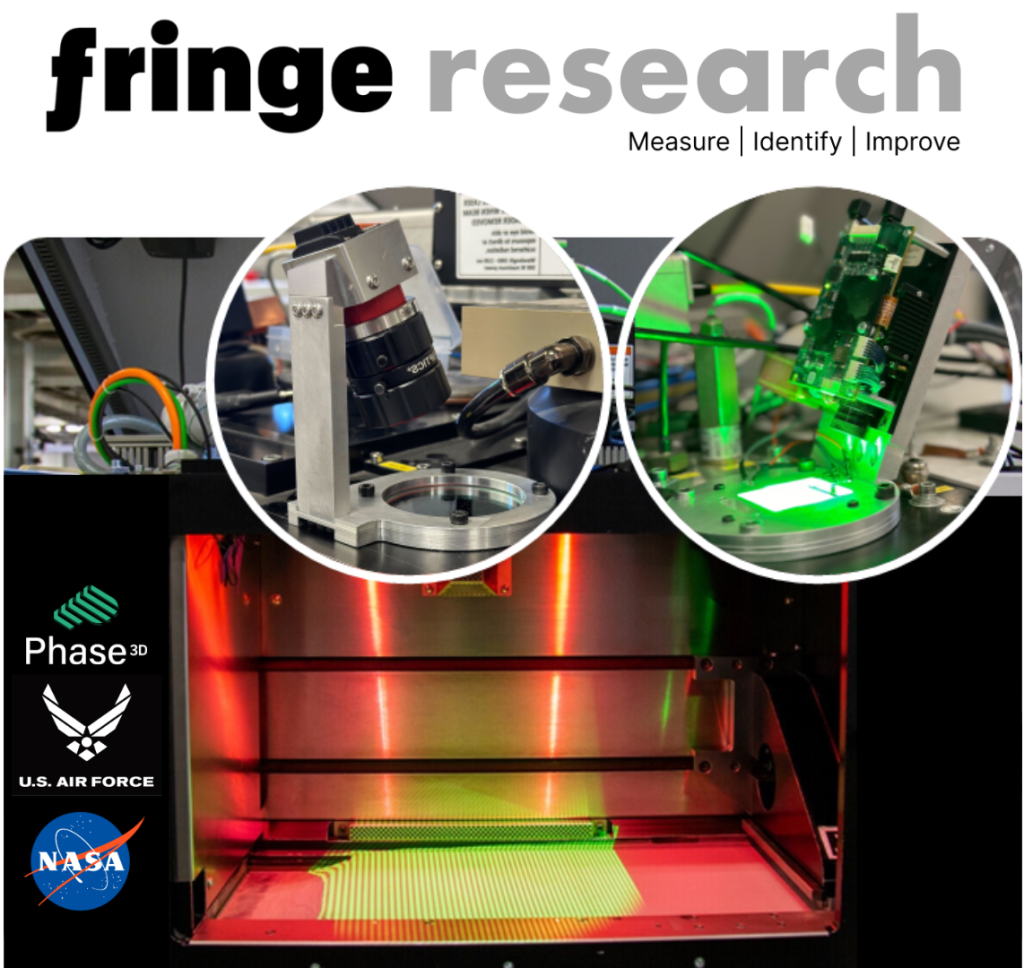Chicago-based 3D printing quality assurance software developer Phase3D is working with the United States Air Force (USAF) and NASA to develop Fringe Research – a new in-situ monitoring software.
Using this new technology, the company claims it is the first to measure anomalies during metal powder bed fusion (PBF) 3D printing and correlate these to defects in the final part, such as porosity.
Fringe Research was used to successfully validate two materials on different PBF 3D printers. Phase3D calls this achievement a “significant leap forward” for ensuring quality and reliability in additive manufacturing. This is a key challenge for aerospace applications. Indeed, porosity often causes metal parts to be rejected by the USAF and NASA.
Niall O’Dowd, Founder and CEO of Phase3D, claims that this defect-detection software will enable aerospace customers to increase 3D printers by over 10% yearly. This will be achieved by stopping the production of parts that would later fail inspection.
“Providing our customers a high correlation of measurable build anomalies to part defects is changing what is possible for AM,” added O’Dowd.

Phase3D develops Fringe Research
The development of Fringe Research was supported by a Phase I contract from the Air Force Research Lab (AFRL) and the Small Business Technology Transfer (STTR) programme.
Phase3D believes that, for metal additive manufacturing to be more widely adopted by industrial manufacturers, validation needs to occur during the 3D printing process. Its live defect detection software measures, in microns, each layer of powder during PBF 3D printing.
The system then automatically identifies anomalies during the build process, with the company successfully measuring anomalies that would cause porosity in the final part. According to Phase3D, this is the first time an inspection company has achieved this.
Fringe Research employs structured light to create the measurements needed to create these correlations, making it compatible with most powder-based 3D printers.

Fringe Research monitors 3D printing for NASA and the USAF
To demonstrate its newly developed software, Phase3D 3D printed parts with Ti64 for the U.S. Air Force and GRCop-42 for NASA. The goal was to determine the effect of detectable build variation on part quality.
The experiment utilized an anomaly generator. This creates realistic, geometry-based powder and melted anomalies, including hops and streak patterns commonly seen in metal 3D printing.
During the additive manufacturing process, Fringe Research automatically identified hops and streaks that were later correlated to porosity in the final part. Computed Tomography (CT) scanning was used to inspect the parts, while correlation was achieved using Fringe Research and an unnamed commercial CT inspection software.
The USAF’s Ti64 was 3D printed on an EOS M 290 system, with 81% of the identified anomalies correlating to part defects detected by CT scanning. Moreover, all of the Fringe Research-detected issues with depressions larger than 47 microns matched defects found by the CT scans.
NASA’s GRCop-64 material was 3D printed on a Colibrium Additive M2. 83% of the defects in the test samples matched layers where Fringe Research found issues. Additionally, 100% of anomalies with depressions larger than 42 microns matched defects found by CT scans.

Defect detection optimizes industrial 3D printing
Defect detection and quality assurance is key when 3D printing for demanding industrial applications, such as aerospace and space.
3D printing software and services company Materialise offers its AI-powered Process Control software for metal 3D printing. This tool allows users to control the quality of parts by analyzing data collected during additive manufacturing. Through this process, problematic parts can be located before the post-processing and quality inspection stages, which can add 30% to 70% to the costs of a final part.
Phase3D and Sigma Additive Solutions supported Materialise in the development of this software. They combined their supplementary data to achieve a comprehensive understanding of the 3D printing process.
Elsewhere, Californian metal 3D printer manufacturer Velo3D’s Assure Quality Assurance and Control System monitors the 3D printing process on its laser powder bed fusion (LPBF) Sapphire 3D printers. The tool offers live detection of defects and generates control and build report summaries.
Velo3D’s software employs live, multi-sensor, physics-based detection algorithms. This allows it to trace part quality during 3D printing for a streamlined part validation process.
Register now for AMAA 2024 to hear insights from industry experts on additive manufacturing in aerospace, space, and defense.
Want to help select the winners of the 2024 3D Printing Industry Awards? Join the Expert Committee today.
What does the future of 3D printing hold?
What near-term 3D printing trends have been highlighted by industry experts?
Subscribe to the 3D Printing Industry newsletter to keep up to date with the latest 3D printing news.
You can also follow us on Twitter, like our Facebook page, and subscribe to the 3D Printing Industry Youtube channel to access more exclusive content.
Featured image shows the Fringe Research announcement banner. Image via Phase3D.


